Chrysler’s Chrysler Chronicle II: Restoration of the Doors, Rear Fenders and Skirts
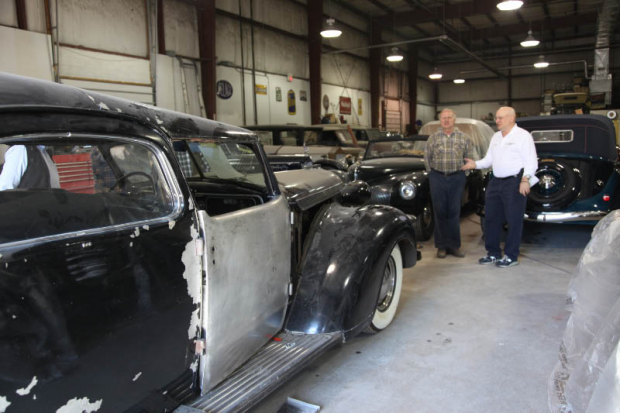
Historian and coachwork specialist Walt Gosden has been providing reports on the restoration of the 1937 Chrysler's Chrysler. The second article documents the restoration of the doors, rear fenders and skirts.
Enjoy,
Howard Kroplick
Chrysler’s Chrysler Chronicle II: Restoration of the Doors, Rear Fenders and Skirts
By Walter Gosden
Considerable progress has been made towards the disassembly and assessment of work needing to be done as well as the start of the repair/restoration process. The cast trim that wrapped around the lower edge of the rear of the body and fender skirts continuing along the length of the running boards was removed along with the 40 rusted nuts that held it all in place. The rear fenders and fender skirts were then removed and sand blasted clean of rust.
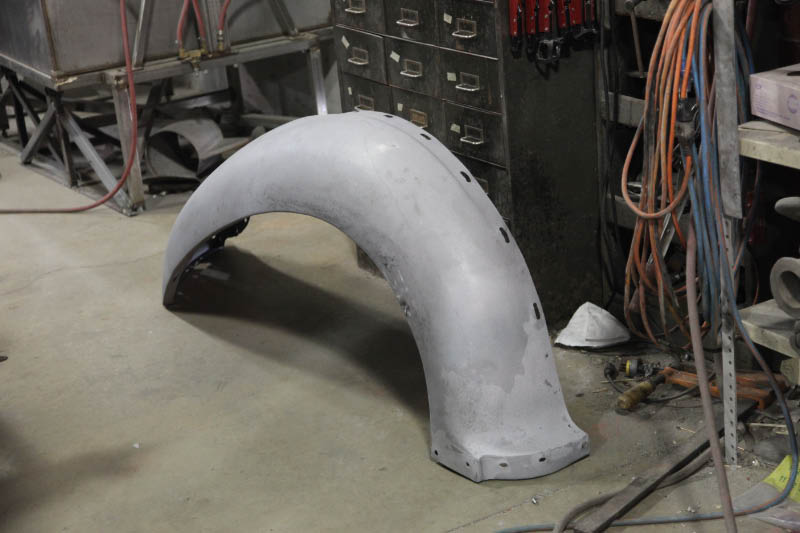
As the photographs show although the fenders and skirts were made of steel, there are sections of lead in all of them (note the different color) which was common practice at the time to help smooth out the surface. The plastic based body filler that is used today replaced the lead in post WWII years as knowledge in chemical compounds capability advanced.
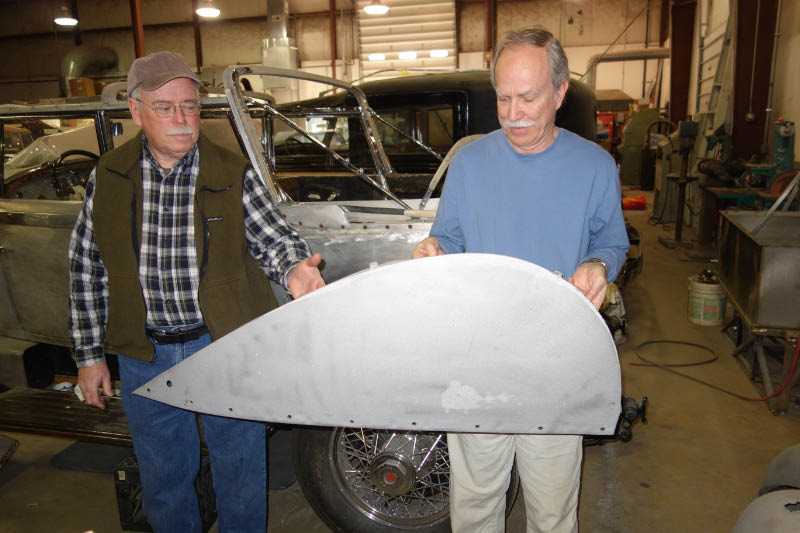
The fender shirts are very heavy with steel reinforcing strips running inside along the bottom edge to help the skirts not only keep their contour, but also act as a base to secure the cast trim to.
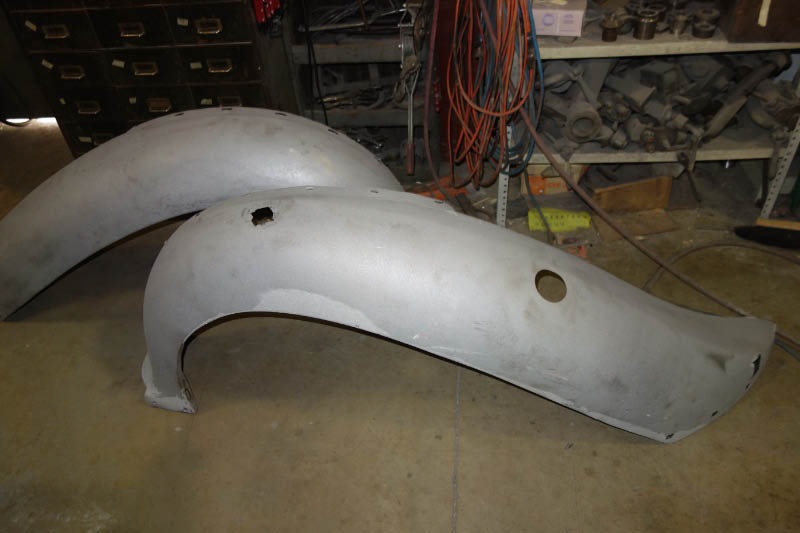
Note the hole at the top of the left rear fender. This is where a steady drip of water landed for decades that had to wear through the paint and primer layers, then corrode its way through the heavy gauge steel of the fender. Caked in mud was scraped from inside the rear fenders and rear wheel wells. A total of 25 metal bolt tabs that hold the rear fenders to the body were removed, cleaned and painted before being labeled and stored until needed. Note how the front of the rear fenders curve forward to meet the rear of the running board to blend together and the large quantity of lead there to make that contour smooth.
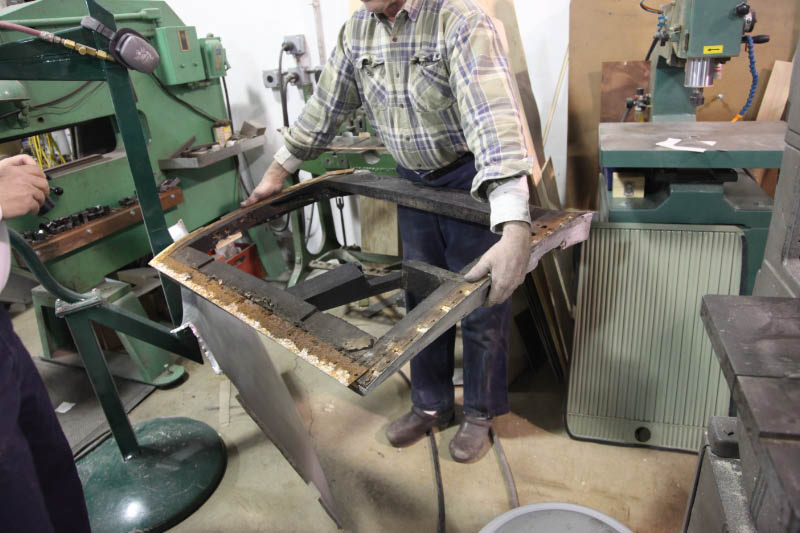
Despite the fact that the front doors appeared to be in good order and shut well, when they and the sheet metal of the lower cowl and door posts were removed, the effects of decades of neglect and damp storage became evident.
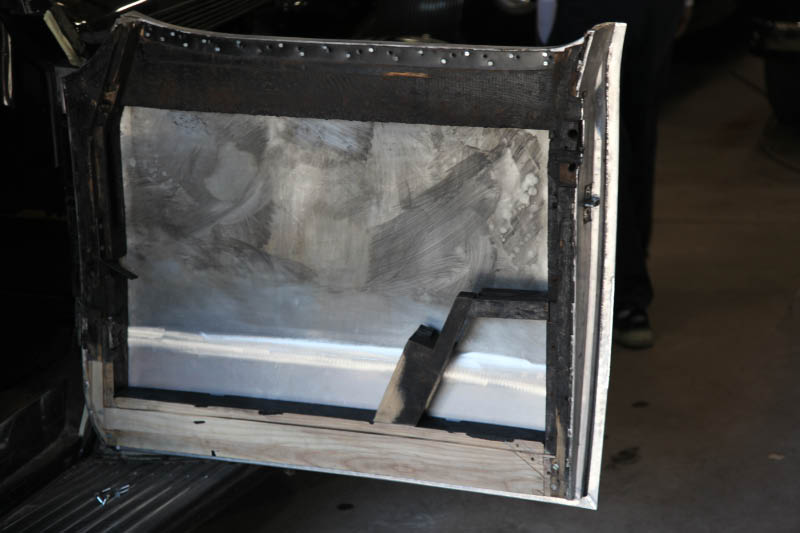
The broken wood for the cowl vents has been repaired and the right front door was disassembled. It was found major repairs would be required.
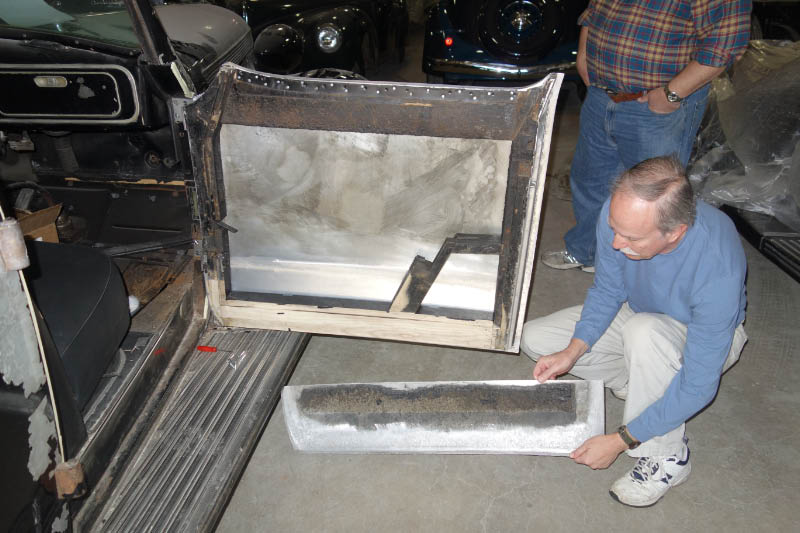
The metal skin was carefully removed from the wood frame of the door and the bottom door sill was found to be in poor condition due to damp rot. The water that was absorbed into the wood (lack of air kept it from drying out) also severely corroded the door skin sheet metal. It was rusting away from the inside, while the outside appeared to be in good condition. A 6 inch section of the bottom of the door skin had to be cut away and replaced with new metal. This was welded in place and then the welded seam between new and old metal ground smooth on both inner and outer surfaces. All of the sound deadening material on the inside of the door had to be stripped clean before any metal repair could take place.
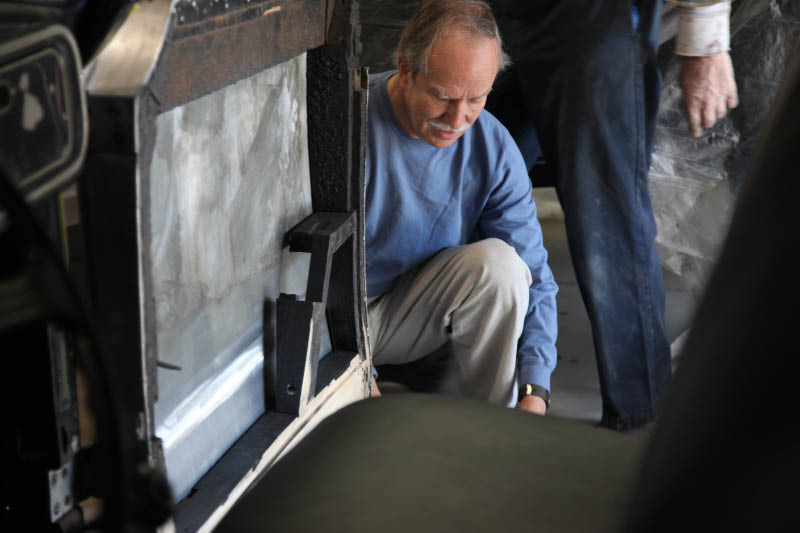
The finished seam is perfectly smooth to the touch on both sides and has no body filler. This shows the skill of the body work that is being done. The quality and craftsmanship are outstanding. Steel strips for the door skin to hold on to were reinstalled and many other steps during restoration were taken that would take too long to go into further detail.
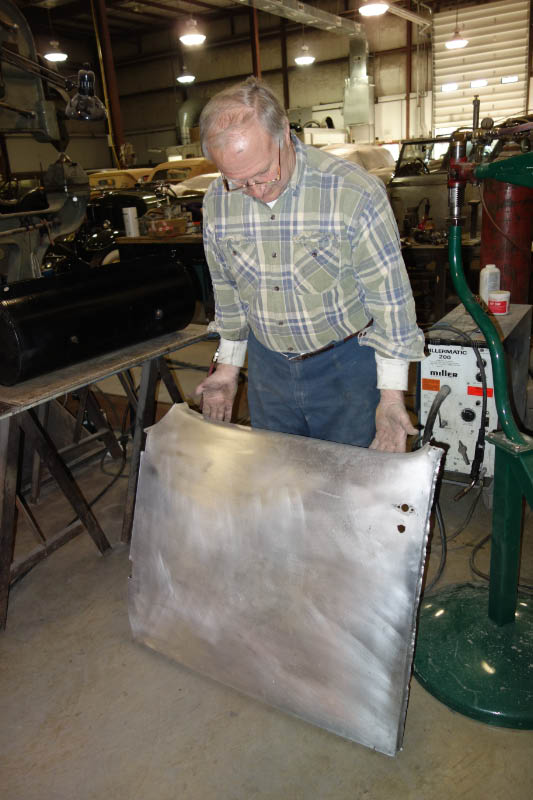
The right door was rehung and opens and closes as new, with perfect fit of all original pieces beck where they belong. As you read this the driver's door is now being restored with the same attention and care.
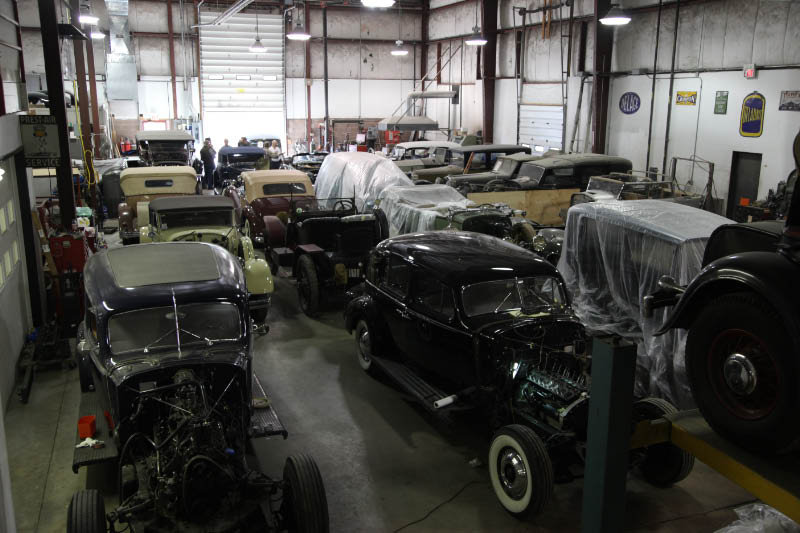
Although this car has suffered severely from neglect and damp, it has never seen any previous repairs and is totally original as built. This is a very fortunate and important factor as the craftsman at Automotive Restorations of New Jersey do not have to correct someone else's mistakes or poor previous repairs. It is a real privilege to be able to watch this restoration as it continues.

Comments
GREAT TO SEE THE FINAL RESTORATION OF THIS ONE OF A KIND AUTO TAKE SHAPE. CAN’T WAIT SO SEE THE FINISHED RESTORATION.
THANKS FOR THE UPDATE.
ROGER
I really enjoy the updates, please keep them coming.
Thanks to Howard and Walt for keeping us updated about Chrysler’s Chrysler.
It’s amazing discovering all the unexpected work that needs to be done on the car.
Roger Price
Are you going to replace the lead that appeared when the steel was exposed during the restoration process?
Was surprised when they uncovered the rust.
Great story.
Tony
What a job they’re doing,looking good as far as it goes now. Correct me if I’m wrong,when this car is finished,it will be the only 1937 Chrysler LaBaron on Long Island restored to it’s original condition and Howard you have it,along with the Black Beast too,what an amazing accomplishment.
A good site to see the LIMP in NYC is at the DOITT website listed below and click on the camera icon to change to the aerial mode.
http://maps.nyc.gov/doitt/nycitymap/
Tony
the lead work will stay, it is in good condition, it is stable and does not crack like plastic filler does if that is put on to thick , lead just makes the cars heavier. this shop can still do lead work like this if they feel it is necessary. Luxury production bodied cars (Packard, Cord etc.) of this era used lead to fill in places where body panels were joined. Cars built a few years earlier would have a piece of metal trim nailed in place to conceal the joint where the two panels of the body would meet.
Fascinating, and educational. Keep it up!
Thanks!
Exciting…..
It was good to know that you went to see car and that it’s coming along fine